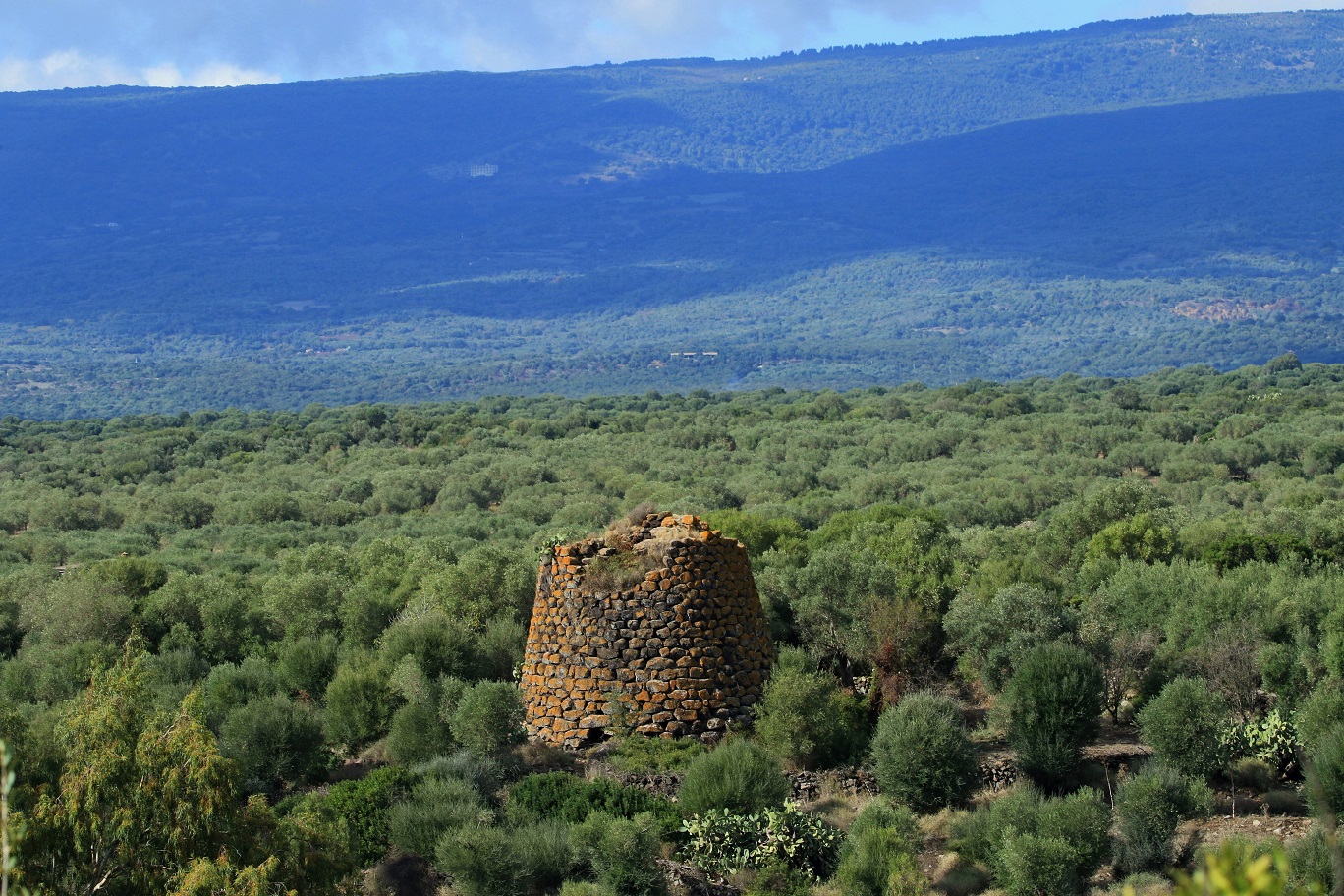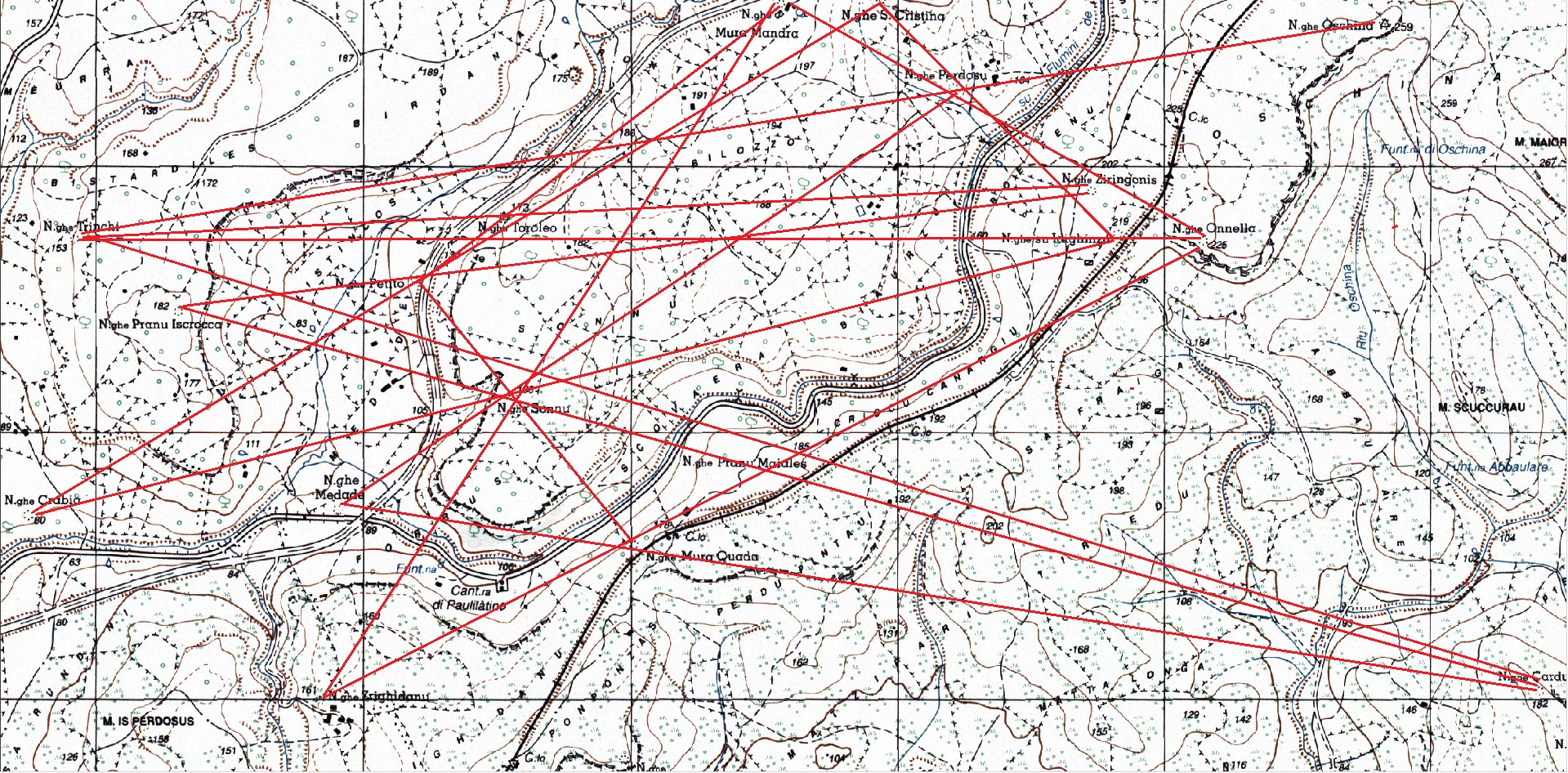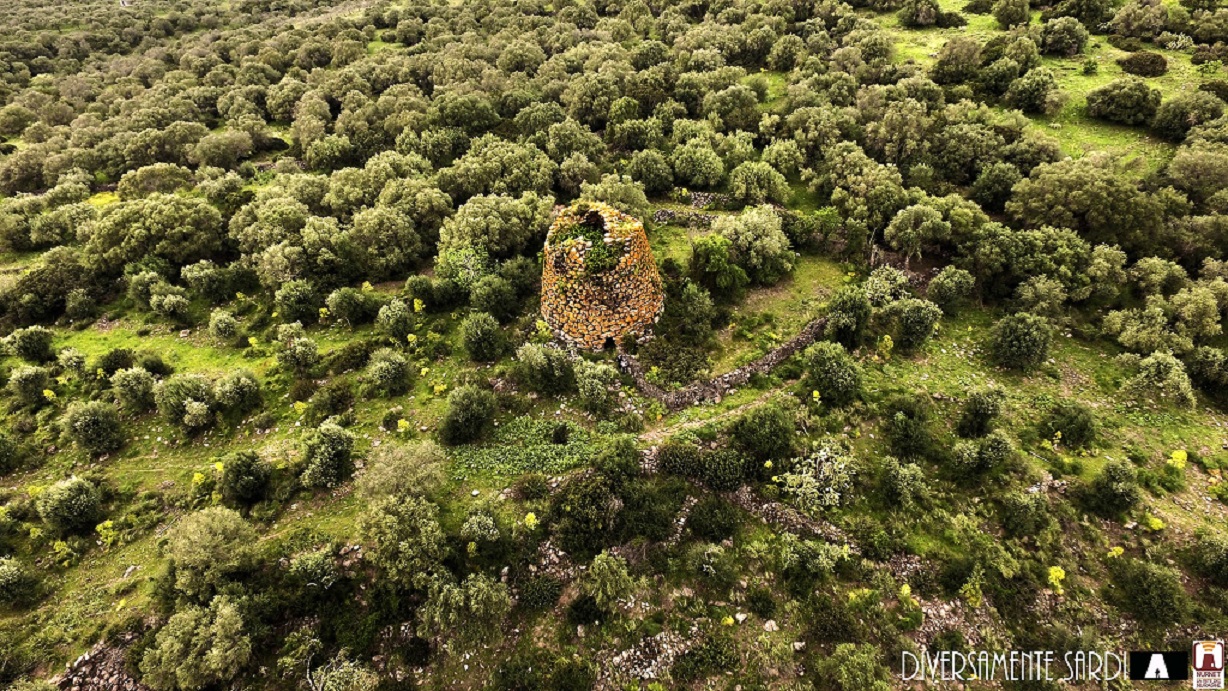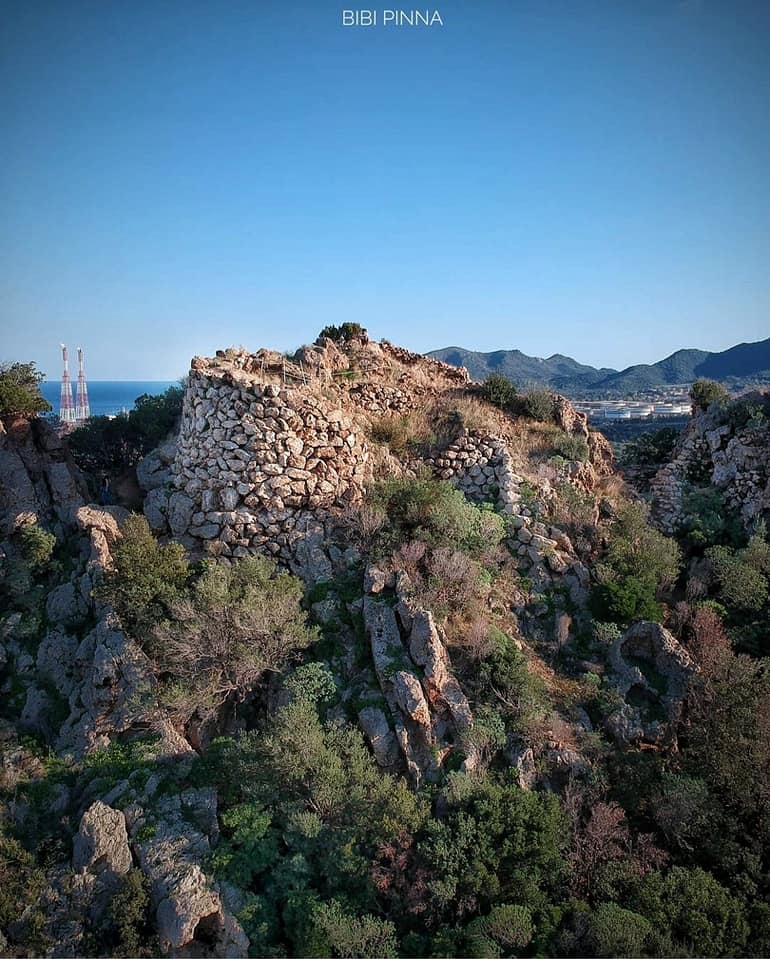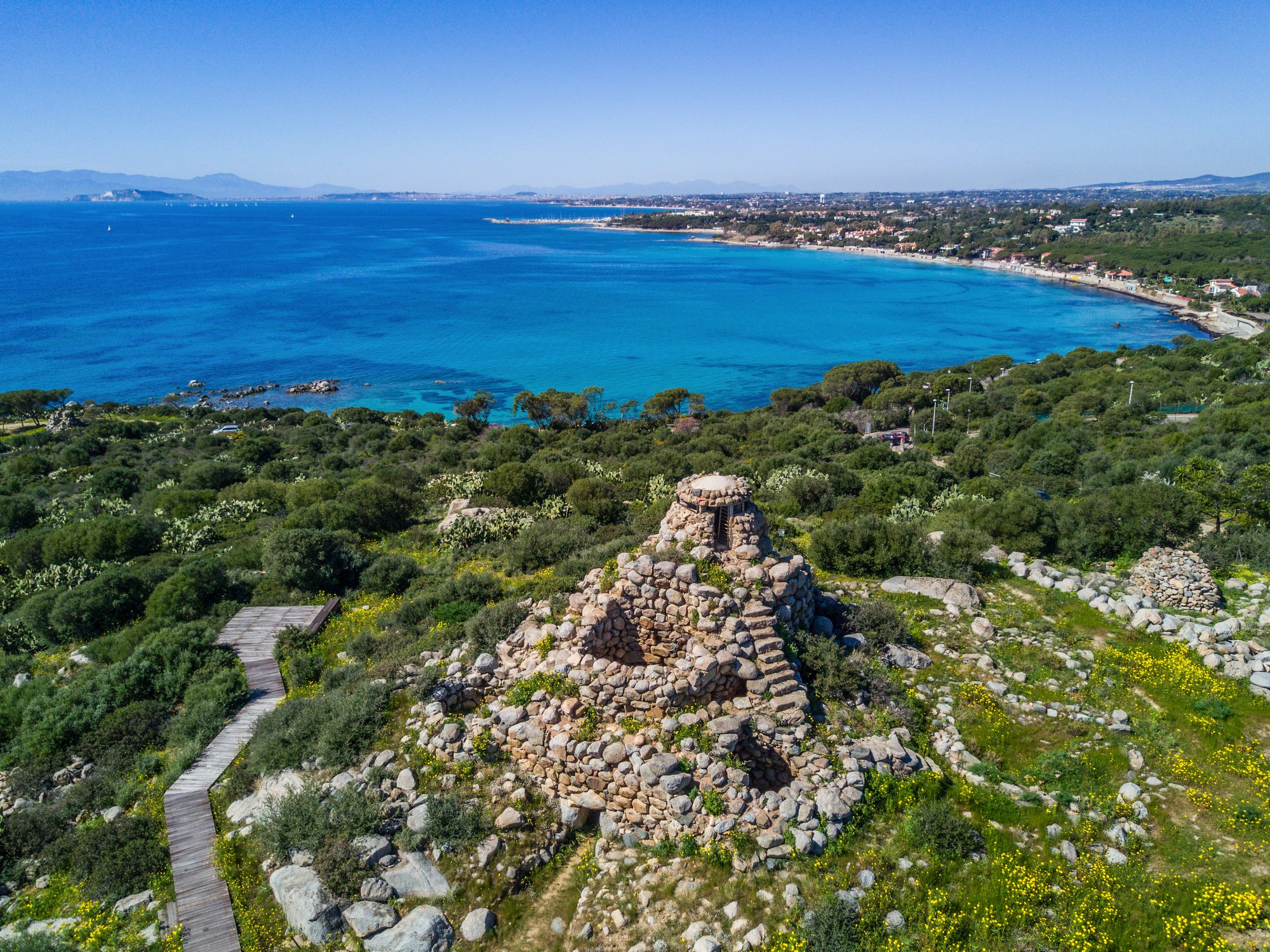Among the various theories regarding the function of the nuraghi, the assumption that they served, in addition to other tasks, also to oversee and control the territory is one of the most accredited. This is confirmed, for example, by their concentration near those watercourses that during the Nuragic period are believed to have had sufficient water flow to allow the passage of boats or at least of barges on which to load and transport minerals, metals, agricultural products, and various goods to the coast for storage and/or subsequent shipping.
The Gulf of Cagliari, due to its strategic position and because its landings were sheltered from the prevailing northwestern winds, must have played a strategic role in Mediterranean trade. It is interesting to observe how numerous nuraghi rose along the coastline or in its proximity, often visually connected to each other, located both along the southeastern stretch of coast (the more than thirty nuraghi led by the nuraghe Diana or Nuraxianna in the locality of Capitana di Quartu being an example) and along the southwestern coast. Among them, particular significance is held by the nuraghe Sa Domu ‘e s’Orcu di Sarroch, described by Taramelli in 1926 in his “Quaderni di Scavi e Scoperte.” From the reissue of the writings of the great archaeologist, published by Carlo Delfino Editore in 1985 edited by Alberto Moravetti, we have extracted the following passage:
<< For many years, the Directorate of Excavations of Sardinia, since it was entrusted to Professor Giovanni Patroni, had set its sights on the nuraghe “Sa Domu ‘e s’Orcu” of Sarroch, both because it is relatively close to Cagliari and because it is located near the shore of the Gulf of that name, between the territories of the two ancient Phoenician-Punic colonies of Nora and Caralis, and it could hold the first traces of the relationships between the indigenous proto-Sardinians and the transmarine immigrants, shedding light on the events of such relations and determining whether they abruptly ended with the disappearance of the Nuragic civilization from the coastal area that saw the two wealthy Carthaginian maritime colonies flourish. But other works attracted the Directorate’s attention, and the nuraghe of Sarroch could not be addressed until the enlightened courtesy of the landowner, Nob. Comm. Avv. Giuseppe Siotto broke the delays, for he not only granted permission to carry out the excavations and research that were necessary, but also provided all possible assistance during the exploration campaign conducted in the spring of 1924, with the means provided by the Ministry of Education. Thus, I am pleased to express, first of all, to the generous Mr. Siotto the gratitude of our Directorate and the scholars, to whom an example of a nuragic building explored with all possible diligence is presented. The nuraghe “Sa Domu ‘e s’Orcu,” which rises on a hill a short distance from the sea, on the western side of the great Gulf of Cagliari, is not a solitary monument isolated from other nuragic buildings. The opinion that the southern part of the island lacks such constructions is not accurate, as many traces of them remain despite the extensive destruction that has occurred over all periods. The location of the nuragic buildings is always in elevated areas dominating the nearby terrain, visible to each other, as in many other locations on the island, for a careful vigilance of the land. But not only are numerous nuraghi noted throughout the southern part of the island, generally more destroyed than in the central highlands, but examining the coastline of the Gulf of Cagliari, a true chain of nuragic buildings presents itself, spaced at not great intervals from one another, at the mouths of the valleys or riverbeds that descend from the mountains towards the sea. Sometimes these nuraghi are close to the beach, at other times somewhat distant, on the first movements of the coastal chain, but always in view of the sea, vigilant at the mouth of a valley, like advanced sentinels connected by a chain of other buildings that along the valley, on the slopes of the mountain, penetrate into the heart of the region. This series of coastal guards that predates by a few millennia the belt of coastal towers of Spanish-Savoy origin has notable interest and value in confirming the opinions already expressed regarding the purpose of vigilant defense of the island for which the nuraghi were erected…>>. g.v.
Attached: The nuraghi: “Sa Domu ‘e S’Orcu” di Sarroch (ph. Marco Cocco e Bibi Pinna); “Crabia” di Bauladu (ph. Gianni Sirigu e Diversamente Sardi); “Diana” di Quartu Sant’Elena (ph. Andrea Mura-Nuragando Sardegna e Lucia Corda); “Antigori” di Sarroch (ph. Bibi Pinna); “Riu Perdosu” di Teulada (ph. Francesca Cossu); Excerpt from the IGM cartography highlighting some alignments between the nuraghi overseeing the stretches of watercourses included between the nuragic complex of “Santa Cristina” di Paulilatino and the nuraghe “Crabia” di Bauladu.

